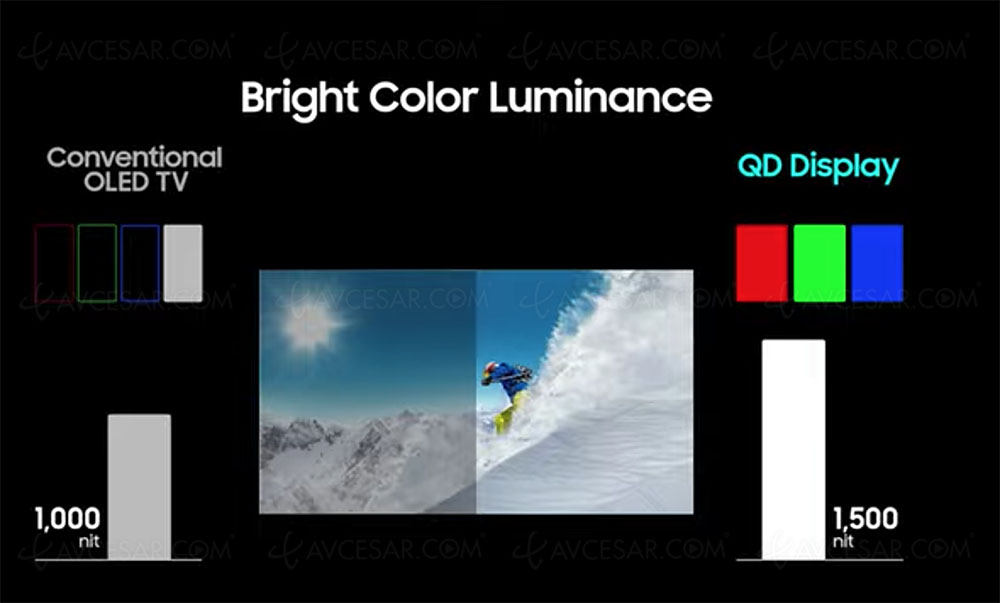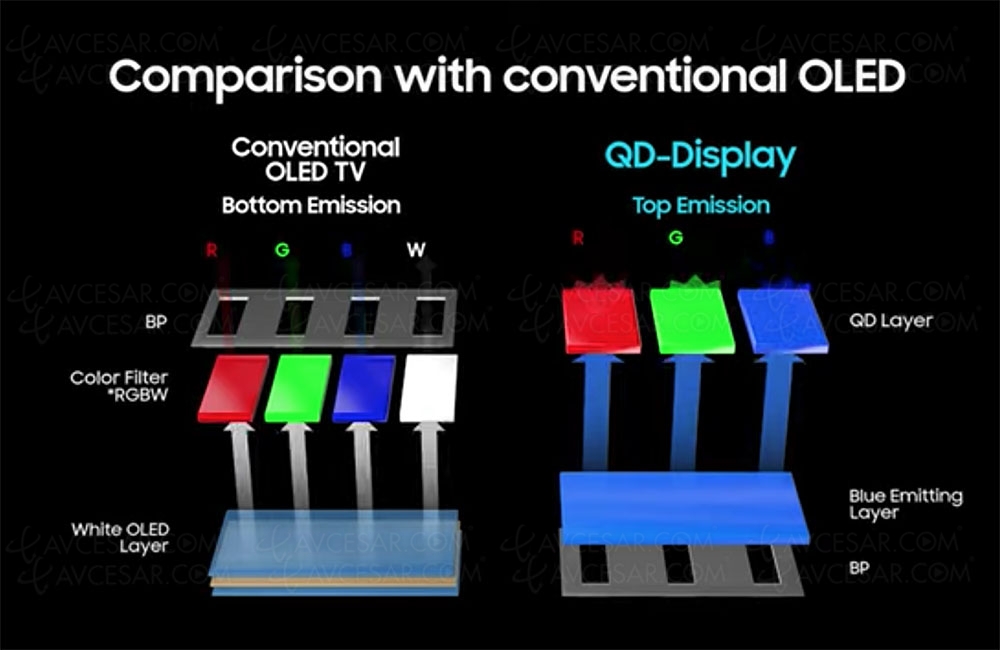Last week, we shared with you the first feedback from journalists about QD Oled technology after a presentation by its inventor, Samsung Display. Today, back to the figures measured with strong photos taken from the presentation of the manufacturer made by our correspondent.
As a reminder, we had published the information gathered orally from several journalists (confirmed by others on several websites) following a light peak measurement carried out live, on QD Oled/QD‑Display TV screens (see our CES 22 news > QD Oled Samsung Display, brighter and more colorful than Oled? The proof in numbers…).
QD Oled/QD-Display, peak bright at 1500 nits
The latter displayed just over 1,000 nits on a 10% white window compared to around 800 nits for an Oled Evo panel (see our full review of the LG OLED65G1 TV), which gives about 25% more brightness for QD Oled vs Woled. According to Samsung Display, the peak light should reach 1,500 nits for a 3% window (figure not confirmed via measurement).
Similarly, Samsung Display claimed 90.3% Rec.2020 gamut coverage for the 55” and 65” QD OLED TV panels and 80.7% of Rec.2020 for the 34-inch monitor panel. As a reminder, the Woled LG Display panels display around 72% of the Rec.2020. Finally, the quality of the blacks was announced to be equivalent (at least) to that of the Woled TVs.

QD Oled/QD-Display, official presentation Samsung Display
Obviously, these figures deserve to be confirmed but it is very promising. Today, after the closing of the doors of the CES show in Las Vegas 2022 and exhaustive analysis of the notes and photos taken and sent by the correspondent of AVCesar.com on site, we are publishing photos from the official Samsung Display presentation.
Panneau TV QD Oled/QD‑Display Ultra HD 8K ? C’est possible !
As a reminder, again, the QD Oled/QD‑Display panels are Ultra HD 4K 10-bit/144 Hz specimens for TVs, 175 Hz for the monitor. Samsung Display indicates that it is easy, if necessary, to display an even greater refresh. Finally, note that Samsung Display has raised the possibility of manufacturing QD Oled / QD‑Display Ultra HD 8K panels, according to customer requests. However, these still require development time (relatively short according to a Samsung Display representative) to fully master the reduction in pixel size. It is indeed necessary to “accommodate” a little more than 33 million on an 8K UHD panel, against 8.3 million on a 4K UHD panel… But nothing is impossible, we have been assured.
– .

